Inside the ancient shell of Hoi An lies a city adorned with moss and rich cultural values. This place also possesses numerous picturesque landmarks and many exciting entertainment spots that are no less captivating than Da Nang. If you don’t know where to go in Hoi An, these 20+ enchanting tourist Attractions in Hoi An will make you forget your way back and allow you to explore to your heart’s content.
Table of Contents
Introduction to Hoi An as a World-Famous Tourist Destination:
Hoi An is an ancient town located in the coastal plain of Quang Nam Province, situated at the lower basin of the Thu Bon River. It used to be a major trading port and the most bustling one in Southeast Asia. However, today, Hoi An is known not as a trading port but as an ancient and captivating tourist city.
Tourism in Hoi An is increasingly attracting a wide range of visitors, not only from Vietnam but also from international tourists who come to explore the ancient town, making it a renowned destination. This has helped Hoi An’s ancient town establish a strong brand internationally, making Vietnam’s tourism industry even more appealing to a growing number of international visitors.
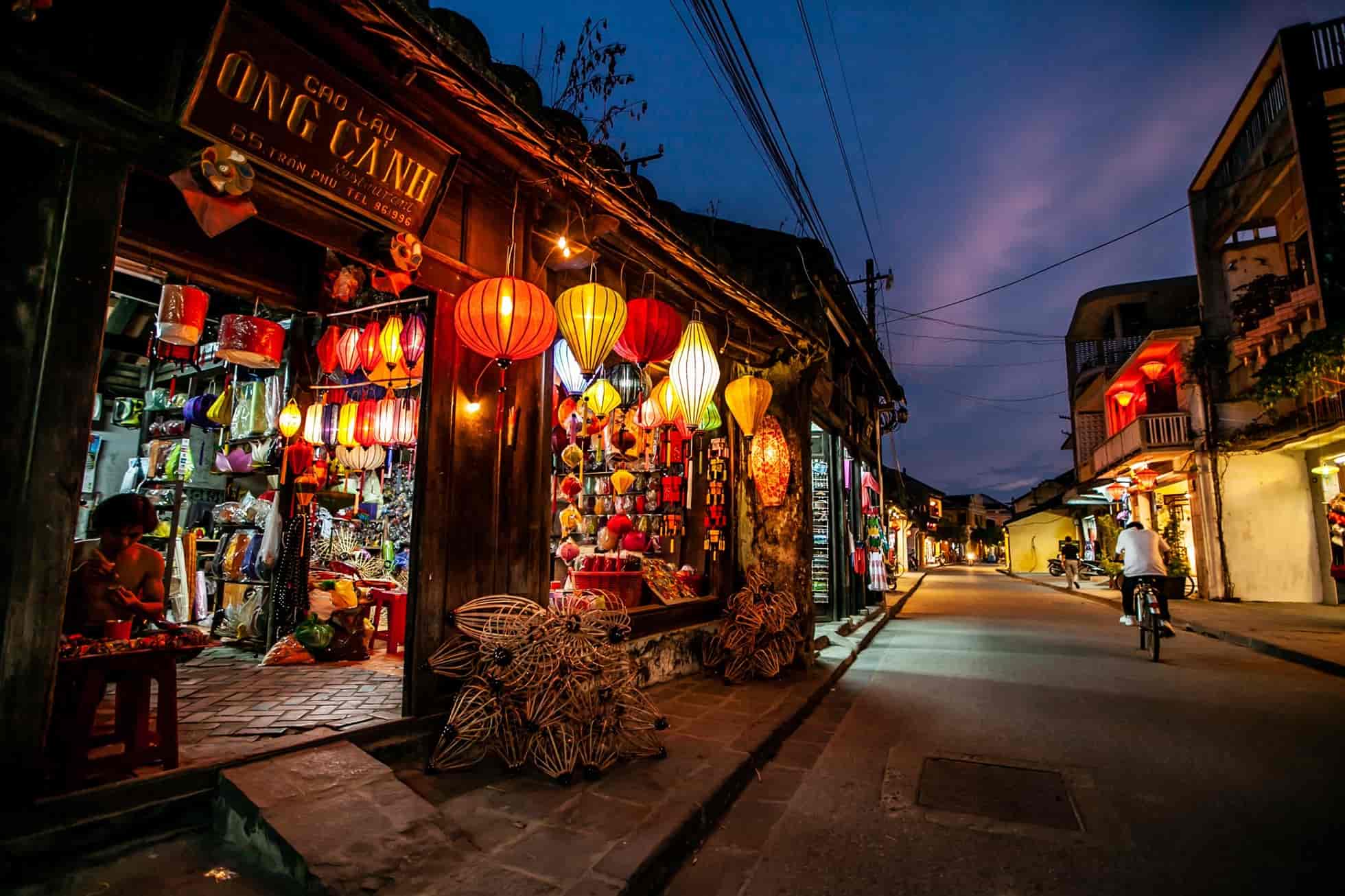
Despite its proximity to Da Nang, Hoi An is strikingly different in terms of its tranquility and the sense of living history it exudes. Hoi An carries the beauty of a bygone era, with its moss-covered tile roofs, streets adorned with colorful lanterns, ancient houses, and architectural structures that have endured for centuries.
Hoi An not only appeals to tourists with its historical charm and ancient relics but also features beautiful beaches and traditional villages, offering diverse attractions that keep travelers engaged. These elements infuse a new vibrancy into the ancient town, ensuring that every visit, whether the first or the tenth, is far from boring.
With a wide variety of attractions, ranging from ancient houses, assembly halls, temples, to beaches and traditional villages, tourists have numerous options to explore and discover. There’s no need to worry about not knowing where to go or what to do, as Hoi An offers an abundance of choices for travelers to enjoy.
Top 20+ Famous Tourist Destinations in Hoi An
To fully experience the 20+ most outstanding tourist destinations in Hoi An, you should plan to visit here for 1 or 2 trips. However, if you plan a single trip, it’s recommended to spend at least 3 to 4 days to see it all. These destinations are not close to each other, and some are quite a distance apart.
Japanese Covered Bridge – The soul of the ancient town
- Address: The beginning of Nguyen Thi Minh Khai Street, Hoi An.
Nicknamed the soul and symbol of Hoi An, the Japanese Covered Bridge, also known as the Japanese Bridge, was constructed by the Japanese at the end of the 16th century. It spans a small creek with intricate and unique architecture that harmoniously combines Vietnamese, Japanese, and Chinese elements.
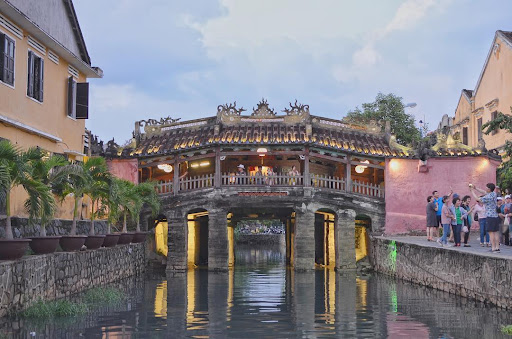
This bridge is not only a place to learn about the cultural and historical significance of Hoi An but also a charming spot for sightseeing and taking picturesque photos.
Lantern Street – A sparkling check-in spot
- Address: On Nguyen Phuc Chu Street, Hoi An.
Multicolored lanterns that brighten up a corner of the sky have become an iconic image of the ancient town, especially in the evening. Regardless of when you visit, you’ll be able to admire the beauty of lanterns hanging all around the town.
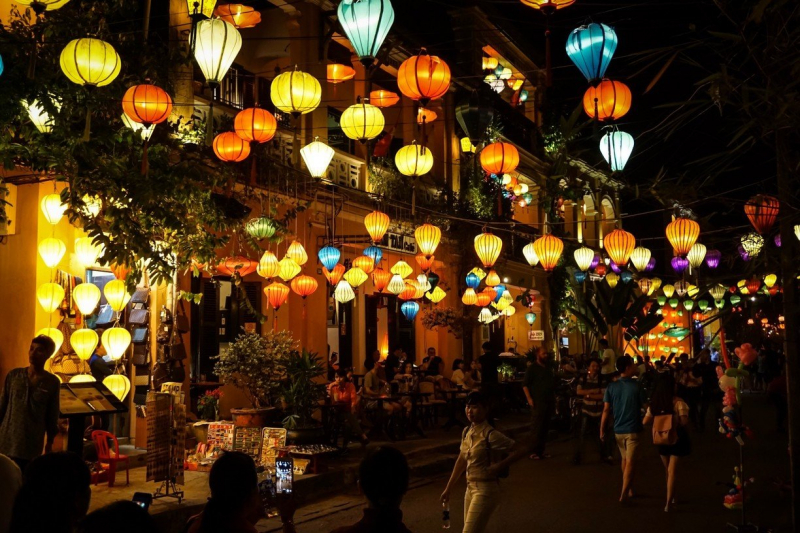
Hoi An’s Lantern Street has become a famous check-in spot. Most tourists visiting Hoi An come to this street to admire and take photos, especially young travelers.
Hoai River – A gentle and serene river
Besides the Japanese Covered Bridge, the image of the Hoai River is also familiar to every visitor to Hoi An. Unlike the hustle and bustle of a city, the Hoai River flows gently and quietly through the heart of the town, much like the tranquil life of the locals.
If you have the chance, find a quiet spot by the river, enjoy a cup of coffee, and admire the beauty of the Hoai River. Taking a boat ride on the Hoai River, releasing lanterns, and listening to local stories are also enjoyable experiences. The Hoai River is a place where many “chill” photos are taken.
The Old House of Phung Hung – Impressive Oriental Beauty
- Address: 4 Nguyen Thi Minh Khai Street, Hoi An.
This ancient house also features a blend of Japanese, Chinese, and Vietnamese architectural styles. The Old House of Phung Hung was built at the end of the 18th century and into the early 20th century. It has maintained its original charm for over two centuries.
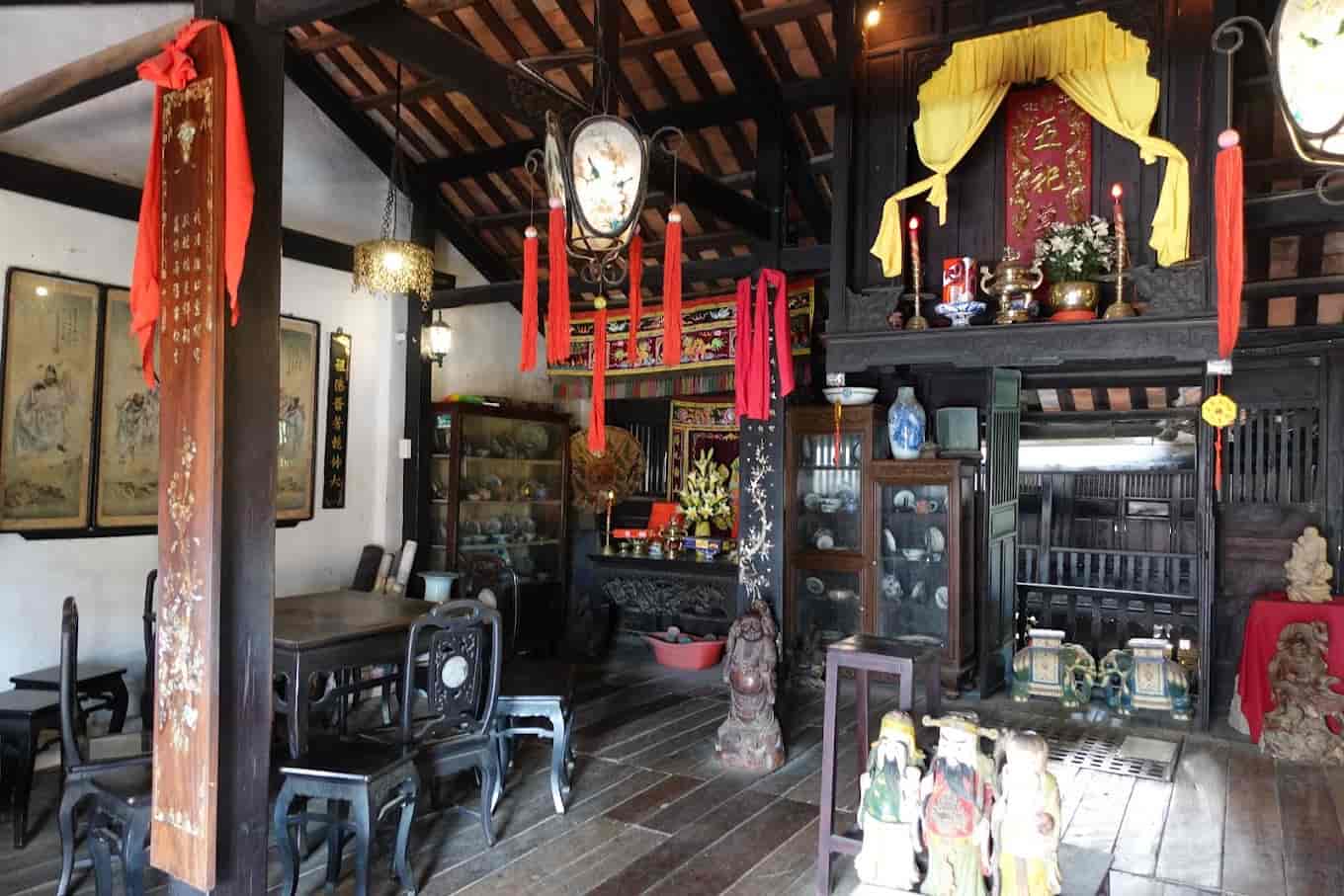
Apart from being a remarkable tourist destination that attracts hundreds of visitors annually, this ancient house is also recognized as a national-level historical relic.
Tan Ky Ancient House – National Cultural Heritage of Vietnam
- Address: 1 Nguyen Thai Hoc Street, Hoi An.
With an age of over 200 years, Tan Ky Ancient House is classified as a national-level historical relic. The house features a unique architectural style that combines Japanese, Chinese, and Vietnamese elements.
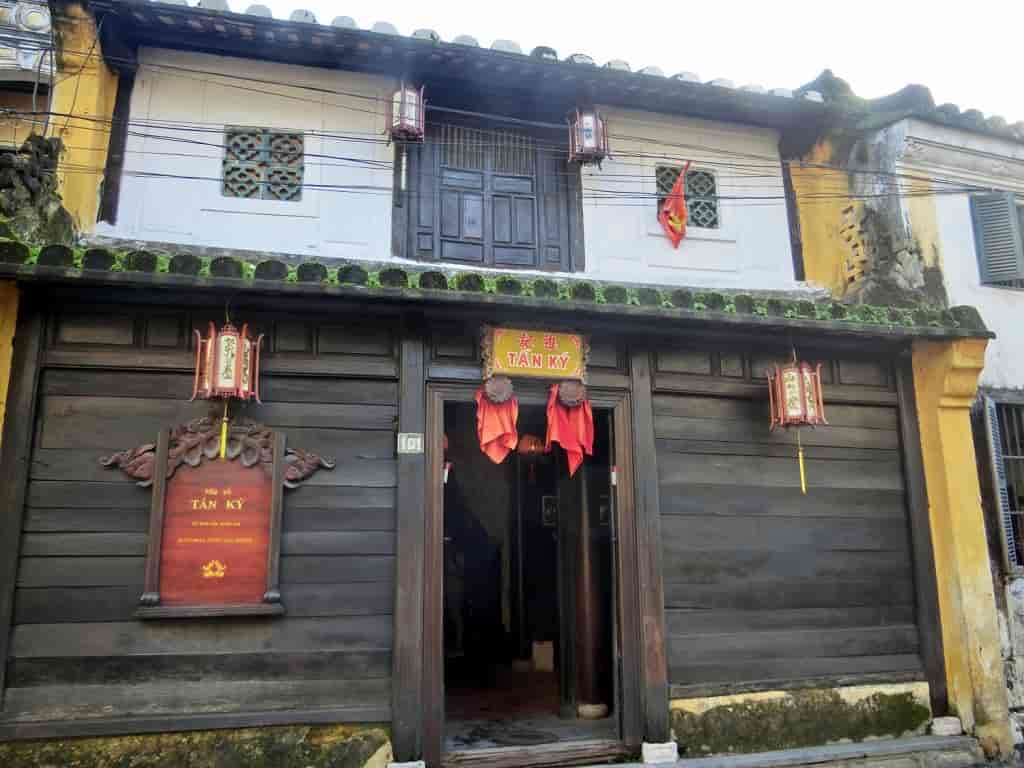
Constructed using traditional materials and intricate carvings, the house has endured through seven generations while retaining its original beauty.
Cantonese Assembly Hall – A Century-Old Architectural Marvel
- Address: 176 Tran Phu Street, Hoi An.
Located at the center of the ancient town, the Cantonese Assembly Hall is a place of worship and community gathering for the Chinese community in Hoi An.
Built in 1885, this assembly hall boasts a grand and impressive architectural style. It houses many ancient artifacts and is also a place for cultural festivals and events, providing a unique experience for visitors.
Fukian Assembly Hall (Hoi Quan Phuc Kien) – Cultural Heritage of the Ancient Town
- Address: 46 Tran Phu Street, Hoi An.
Fukian Assembly Hall (Phuc Kien) is a popular destination for many tourists in Hoi An. It was built in 1967 with the purpose of praying for good health, favorable weather, and children.
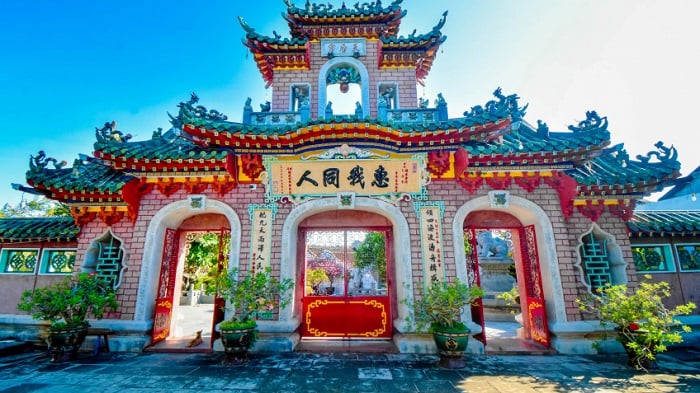
With its grand and magnificent appearance and unique Chinese architecture, it has been recognized as a cultural heritage site. Visitors can take enchanting photos in this space.
Trieu Chau Assembly Hall – A Unique Chinese Community Site
- Address: 157 Nguyen Duy Hieu Street, Hoi An.
For travelers interested in exploring culture, Trieu Chau Assembly Hall is an ideal destination. Also known as the Am Bon Pagoda, it serves as a place for the Trieu Chau community in Hoi An to gather.
Constructed in the 19th century, the assembly hall features intricate Chinese, Japanese, and Vietnamese architectural elements. It is believed that sincere prayers here can ensure safe voyages for fishermen.
Hoi An Market – A World Culinary Paradise
- Address: 19 Tran Phu Street, Cam Chau Ward, Hoi An.
Hoi An Market is a place where you can explore and taste a wide variety of local specialties while enjoying the vibrant atmosphere. Different from the calm and serene ancient town, Hoi An Market is bustling and lively.
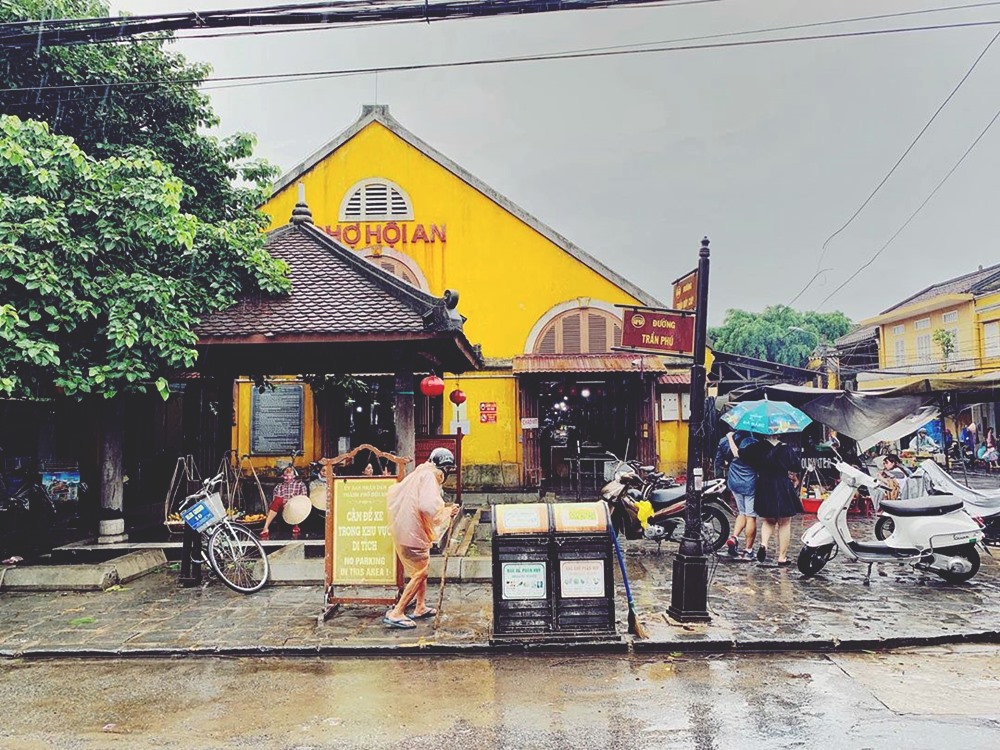
You can find countless local dishes such as Cao Lau, Mi Quang, che (sweet soup), and a variety of souvenirs. The market’s entrance is also a great spot for impressive photos.
Ba Mu Temple
Known as a “Instagrammable” location, Ba Mu Temple is continuously gaining popularity as young travelers rush to check-in. With its intricate golden wall, clear pond, and blue sky reflection, it provides a perfect backdrop.
However, Ba Mu Temple is not just a photo spot; it is also a famous historical site and a symbol of Hoi An.
The My Son Sanctuary
The My Son Sanctuary is a UNESCO World Heritage site located near Hoi An, Vietnam. It is an ancient temple complex that was built by the Champa Kingdom between the 4th and 14th centuries. The sanctuary consists of a series of Hindu temples and towers, many of which have intricate carvings and sculptures.
Visiting My Son Sanctuary is a great way to explore the rich history and culture of the Champa civilization. It’s a fascinating archaeological site that provides insight into the religious and architectural practices of this ancient kingdom.
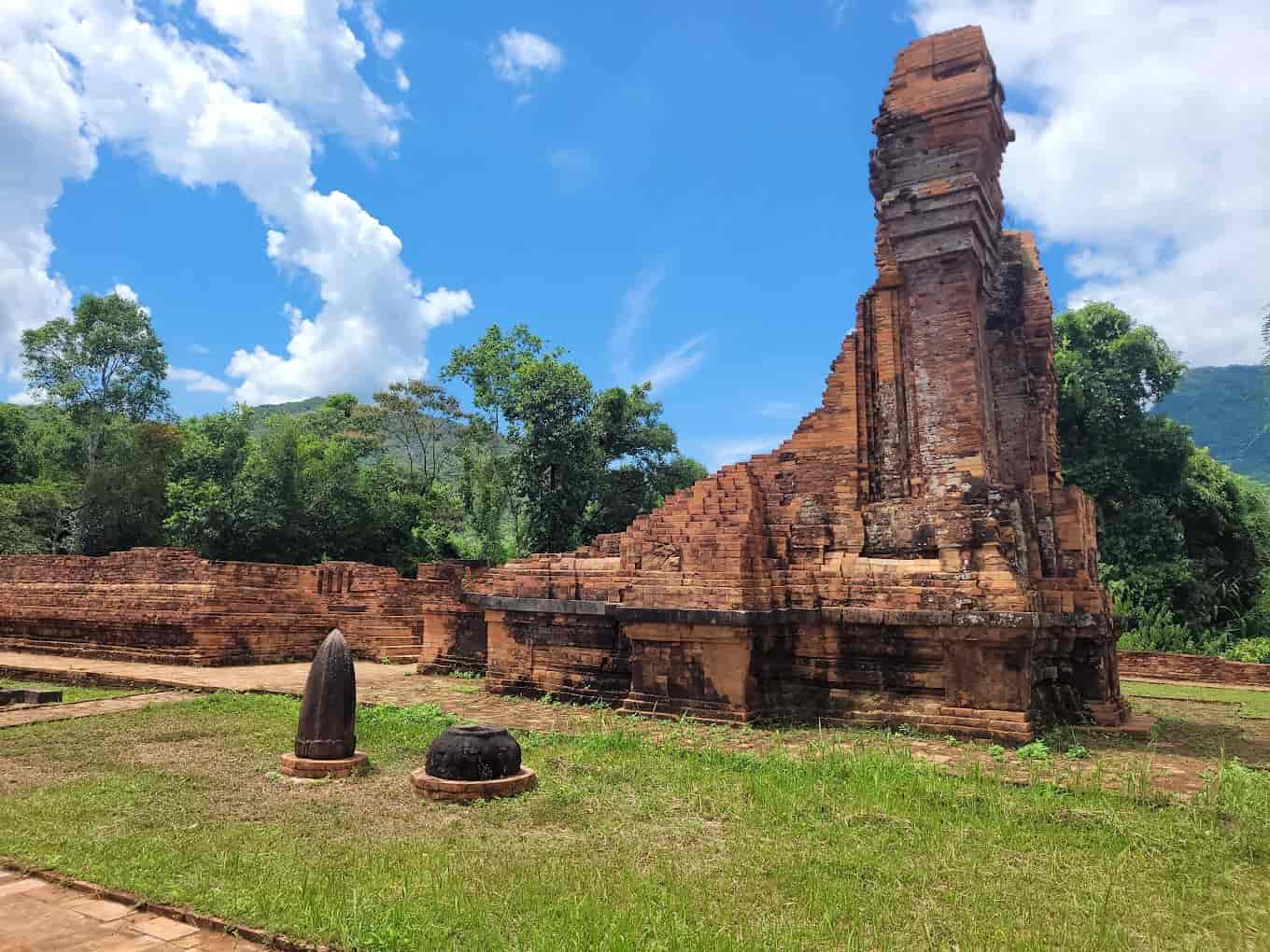
The sanctuary is set in a beautiful natural environment surrounded by lush greenery, which adds to its charm. It’s a popular destination for tourists interested in history and heritage. You can explore the temple ruins and learn about the significance of this site with the help of knowledgeable guides.
It’s advisable to visit early in the morning to avoid the heat and crowds. The journey from Hoi An to My Son Sanctuary takes about 45 minutes by car, and it’s definitely worth including in your Hoi An travel itinerary.
Hoi An Folk Culture Museum
The Hoi An Folk Culture Museum is a unique specialized museum in Hoi An that opened to visitors on March 24, 2005. The museum consists of two classical-style floors.
Inside, it showcases 490 artifacts covering various themes, including folk art, traditional crafts, and more. This helps visitors gain a deeper understanding of Hoi An’s history and development.
- Address: 33 Nguyen Thai Hoc Street, Hoi An.
Museum of Sa Huynh Culture – Unique Pottery Museum
Established in 1995 with the assistance of Japanese experts, the Museum of Sa Huynh Culture currently houses over 430 pottery artifacts dating from the 8th to the 18th century.
These artifacts vividly depict the pottery trade in Hoi An during a time when the town was a bustling international port in Southeast Asia. Visitors to the museum will gain insights into the stories of pottery craftsmanship.
- Address: 80 Tran Phu Street, Hoi An.
An Bang Beach – One of the World’s Top 50 Beaches
In addition to its cultural heritage and historic sites, Hoi An is home to some beautiful beaches, and An Bang Beach is one of them. Located just about 3 km from the ancient town, An Bang Beach has earned its place on the list of the world’s top 50 beaches.
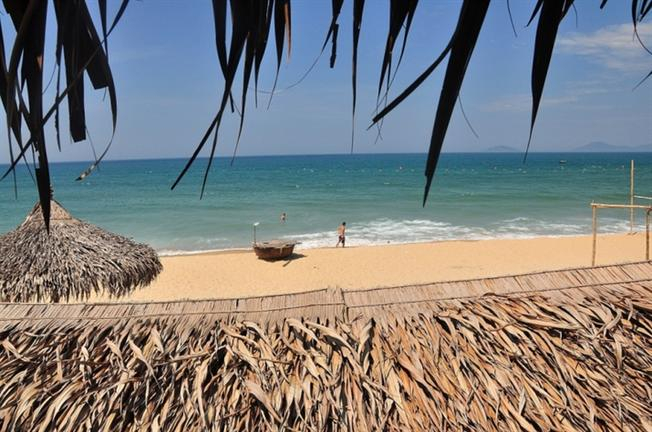
Despite its relatively small size of around 4 km, An Bang Beach offers pristine natural beauty, diverse plant life, soft white sand, and clear blue waters. It’s an ideal destination for beach vacations and relaxation.
- Address: Hai Ba Trung Street, Hoi An.
Cua Dai Beach – Hoi An’s Vibrant Beach
Another famous beach in Hoi An is Cua Dai Beach, a must-visit spot for those exploring the heritage region.

Cua Dai Beach charms visitors with its endless stretches of white sand and towering coconut trees. Here, you can enjoy the clear blue waters, sunbathe on the smooth sand, and savor delicious fresh seafood.
- Address: Hoi An City, Quang Nam Province (about 5 km from the city center).
Impression Hoi An Park – A Unique Park on the Hoai River
This themed park was opened in September 2018 and is relatively less known due to its location on an island in the Hoai River. However, it’s a place worth visiting.
Impression Hoi An Park caters to all age groups. Inside, there are play areas, art spaces for painting, cooking contests, and various games for children. Additionally, there’s a variety of food options, and visitors can easily capture stunning photos in the park.
- Address: Con Hen, Hoi An.
Hoi An Silk Village
Hoi An Silk Village is a charming and educational attraction located in Hoi An, Vietnam. This village is dedicated to preserving and showcasing the traditional art of silk production and weaving, which has been a significant part of Hoi An’s history and culture for centuries.
Visiting Hoi An Silk Village allows you to: Learn About Silk Production, Take Part in Workshops, Admire Silk Creations, Enjoy Cultural Performances, Relax in a Picturesque Setting
Visiting Hoi An Silk Village is not only a unique cultural experience but also an opportunity to support the preservation of traditional craftsmanship. If you appreciate textiles, craftsmanship, or simply want to learn more about the history of silk production, Hoi An Silk Village is a must-visit destination in Hoi An.
Bay Mau Coconut Forest – The Mekong Delta in the Heart of Hoi An
This Hoi An tourist spot is located about 3 km from the ancient town and is often referred to as the “Mekong Delta in the heart of Hoi An.” Visitors to Bay Mau Coconut Forest can experience various activities in a typical riverside setting.
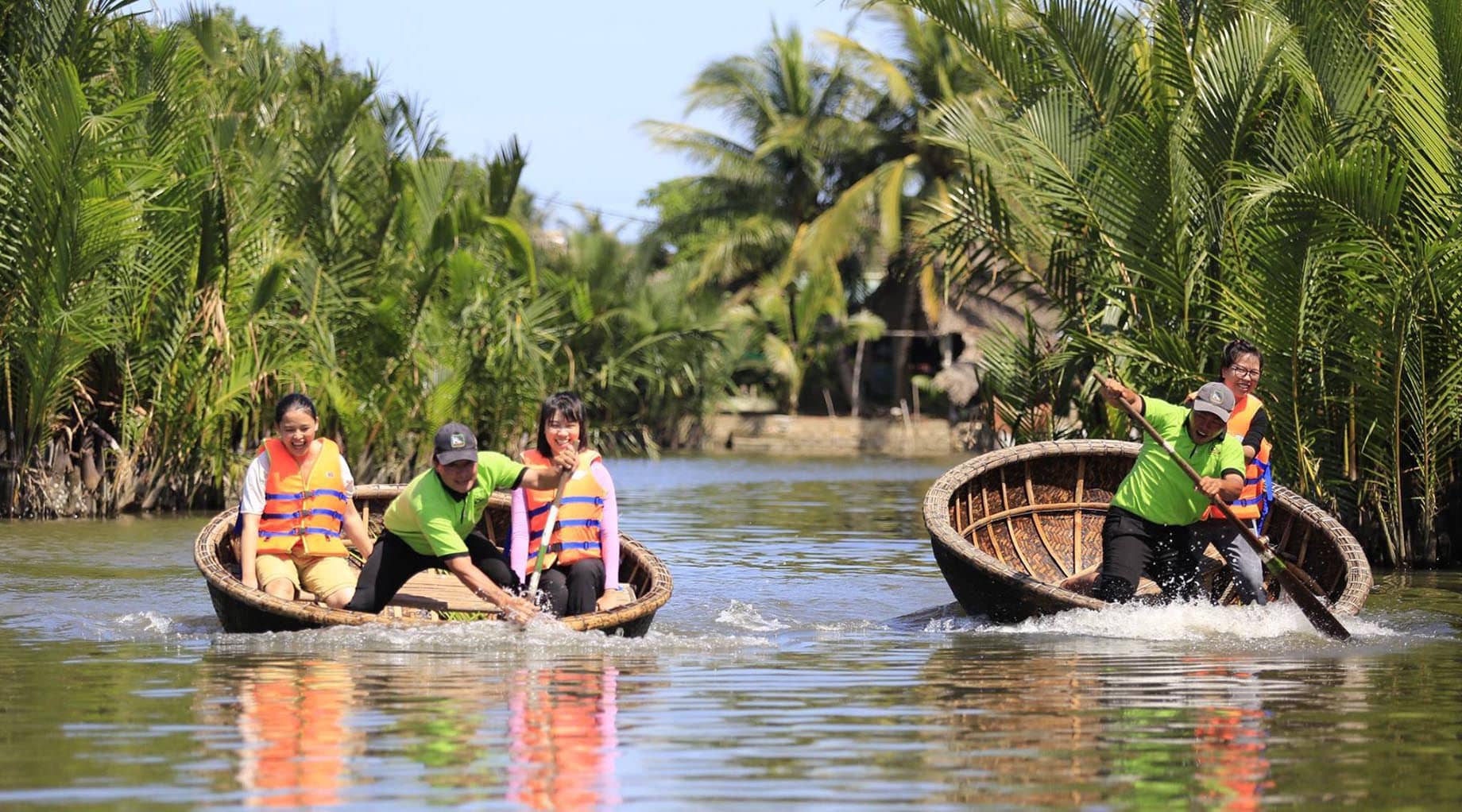
You can paddle in bamboo boats through the coconut forest, immerse yourself in the fresh and cool environment, observe activities like boat rowing, fishing, and even try making souvenirs from coconut leaves. It’s sure to be a memorable experience.
- Address: Cam Thanh Commune, Hoi An.
Tra Que Vegetable Village – The Green Fields of Hoi An
Though it’s not in the city center and may not be very prominent, Tra Que Vegetable Village is a destination that nature enthusiasts and those interested in rural life should not miss.

Famous for its organic vegetable farming, Tra Que Village offers various types of vegetables. Visitors can gain a deeper appreciation of local life by participating in activities like plowing the land, growing vegetables, and watering the plants.
- Address: Tra Que Village, Cam Ha, Hoi An.
Thanh Ha Pottery Village – Over 500 Years of Pottery Craftsmanship
If you’re wondering where to go and what to do in Hoi An, consider visiting Thanh Ha Pottery Village. Located next to the Thu Bon River, about 3 km from the old town, this village has maintained its traditional pottery craft for over 500 years.
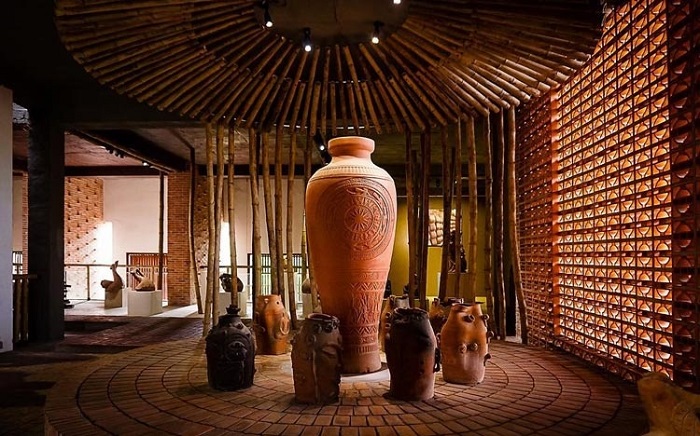
Stepping into this village, visitors will be amazed by unique ceramic products, traditional kiln-roofed houses, and brick-paved roads. There’s also a clay-themed park where you can take captivating photos.
- Address: Pham Phan Street, Thanh Ha Ward, Hoi An.
Cu Lao Cham Island – Hoi An’s Hidden Gem
In addition to the charm of the ancient town, beautiful beaches, and traditional villages, Hoi An also possesses a pristine and stunning island, Cu Lao Cham. This is an attractive tourist destination in Hoi An, attracting more and more travelers from Hoi An and Da Nang.

With its incredibly beautiful blue beaches, rich flora and fauna, fresh air, and delicious seafood, a trip to Cu Lao Cham promises to be very enjoyable. You can not only swim in the sea but also go snorkeling to explore the coral reefs.
- Address: Tan Hiep Commune, Hoi An, Quang Nam.
VinWonders Nam Hoi An
- Address: Vo Chi Cong Road, Binh Minh Commune, Thang Binh District, Quang Nam Province.
Another popular destination that combines sightseeing, photo opportunities, and plenty of fun is VinWonders Nam Hoi An. This amusement park is located just 17 km from Hoi An’s ancient town and is divided into five distinct zones, offering a wide range of experiences for visitors of all ages.
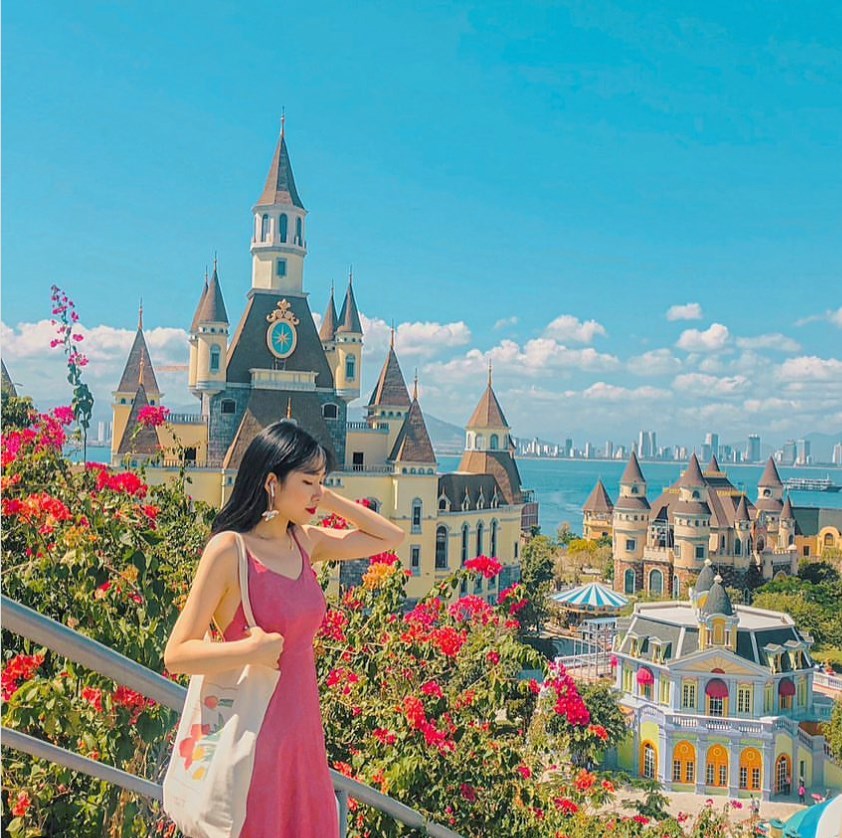
Visitors and families can explore the traditional village, visit the bustling harbor, take a river tour through a wildlife park, and enjoy a water park. There are also exciting thrill rides and attractions, making it a must-visit for an enjoyable day.
Tips for a Perfect Trip to Hoi An
To make your trip to Hoi An as smooth and perfect as possible, consider these tips:
Choosing the Right Time to Visit Hoi An
The ideal time to visit Hoi An depends on your preferences and financial conditions. If you only want to explore Hoi An, a 2-day, 1-night trip will suffice. However, if you plan to visit nearby places like Da Nang and Hue, allocate about 3-4 days for a more relaxed journey.
Where to Stay in Hoi An?
When visiting Hoi An, you have various options for overnight accommodations, including hotels and homestays. Here are some quality places to consider:
- Little Riverside. A Luxury Hotel & Spa – Address: 09 Phan Boi Chau, Son Phong Ward, Hoi An, Quang Nam Province. Room price: 3,150,000 VND/night.
- Vinh Hung Riverside Resort & Spa – Address: 111 Ngo Quyen, Minh An, Hoi An, Quang Nam Province. Room price: 1,362,323 VND/night.
- La An Central Boutique Villa – Address: 9 Ngo Quyen, Minh An, Hoi An, Quang Nam Province. Room price: 934,400 VND/night.
- Moon’s Homestay – Address: 82 Ngo Quyen, Minh An, Hoi An, Quang Nam Province. Room price: 497,000 VND/night.
- Hoa Thu Homestay – Address: 80 Ngo Quyen, Minh An, Hoi An, Quang Nam Province. Room price: 318,000 VND/night.
Estimating Your Travel Expenses in Hoi An
Various expenses are involved in a self-guided trip to Hoi An:
- Transportation costs to Hoi An: Flight tickets range from 380,000 – 3,000,000 VND/person, train tickets cost about 400,000 – 1,200,000 VND/person, and bus tickets range from 400,000 – 500,000 VND/person/one way.
- Local transportation expenses: You can use taxis, buses, cyclos, or bicycles. To make it convenient, consider renting a motorbike for about 100,000 – 150,000 VND/day, or a bicycle for 30,000 VND/day.
- Accommodation costs: Room prices vary based on personal preferences, averaging around 300,000 VND/room/day. Higher-end hotels may cost 1,000,000 VND/day or more.
- Food expenses: Hoi An offers a wide range of delicious and enticing dishes. You can expect to spend approximately 200,000 VND/person/day to satisfy your appetite.
- Entrance fees: Tickets for attractions within the ancient town range from 10,000 VND to 80,000 VND/person. Beaches and other tourist sites in Hoi An may have ticket prices from 100,000 VND to 500,000 VND/person.
Additionally, Hoi An has many free attractions. On a 3-day, 2-night trip to Hoi An, the average expenses will be around 3,500,000 VND – 4,000,000 VND/person.
What to do in Hoi An? What are the famous tourist Attractions in Hoi An? Hoi An offers much more than just its ancient town with mossy roofs and colorful lanterns; it also boasts beautiful beaches, vibrant nightlife, and unique attractions. Get ready and pack your bags to explore the hottest tourist Attractions in Hoi An.



[…] of Hoi An’s Old Town, renowned for its unique architectural significance. It is one of the most famous tourist destinations in Hoi An that you shouldn’t miss when visiting Hoi An’s Old Town. Let’s explore what makes […]
[…] so special and appealing that it attracts a large number of visitors? Let’s explore this famous tourist destination in Hoi An with DanangPrivateCar.com’s in the following […]